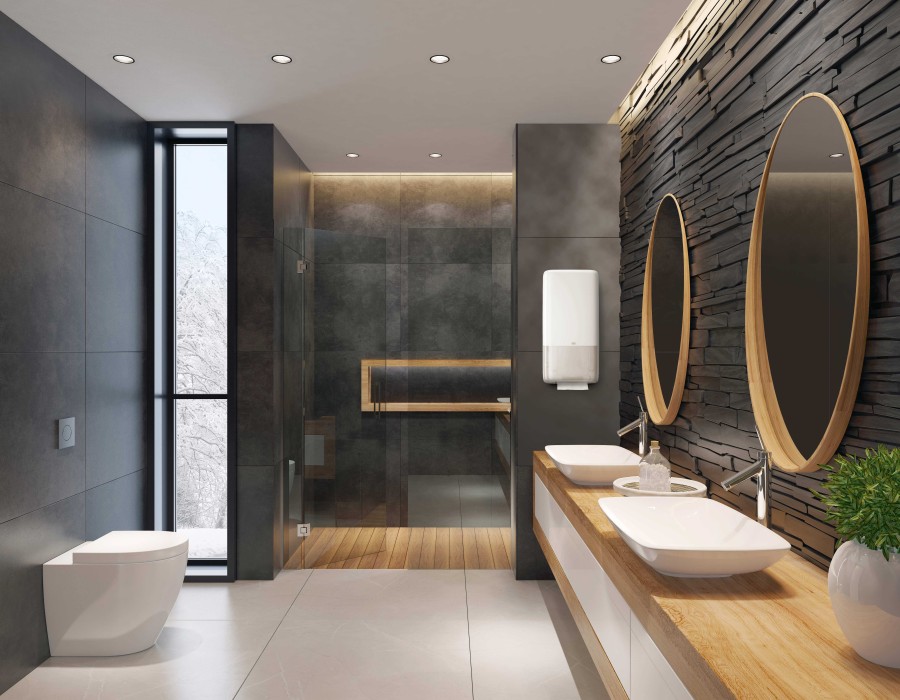Designing a bathroom involves more than selecting tiles and fixtures; it's about creating a cohesive space that balances aesthetics, functionality, and comfort. A designer bathroom expert can help you navigate the myriad of choices, avoid common pitfalls, and bring your vision to life with precision and flair.
Key Considerations in Bathroom Design
1. Optimizing Layout and Space
Efficient use of space is crucial, especially in smaller bathrooms. Experts recommend planning around existing plumbing to minimize costs and complications. Segregating wet and dry zones enhances functionality and safety.
2. Lighting: Setting the Mood
Lighting plays a pivotal role in bathroom ambiance. Layered lighting schemes, combining task, ambient, and accent lighting, can transform the space. Incorporating natural light where possible adds warmth and openness.
3. Material Selection for Durability and Style
Choosing the right materials ensures longevity and aesthetic appeal. Marble and porcelain are popular for their durability and timeless look. For a modern touch, consider large-format tiles and seamless finishes.
4. Incorporating Wellness Features
Modern bathrooms are evolving into wellness retreats. Features like saunas, steam rooms, and smart technologies enhance relaxation and convenience. Designers are integrating these elements to create spa-like experiences at home.
5. Personalization and Unique Touches
Personalizing your bathroom adds character and comfort. Incorporate elements that reflect your style, such as unique fixtures, artwork, or customized storage solutions. These touches make the space truly yours.
Common Mistakes to Avoid
Even with the best intentions, certain design missteps can detract from your bathroom's functionality and appeal. Avoiding these common errors can save time and resources:
- Overcomplicating Finishes: Using too many different finishes can make the space feel cluttered. Aim for a cohesive look with complementary materials.
- Neglecting Storage Needs: Insufficient storage leads to clutter. Incorporate ample and accessible storage solutions to keep the space organized.
- Poor Lighting Choices: Inadequate or harsh lighting can affect both functionality and mood. Plan a layered lighting scheme to suit various needs.
- Ignoring Ventilation: Proper ventilation prevents moisture buildup and mold growth, preserving both health and materials.
Conclusion
Designing a bathroom that combines luxury, functionality, and personal style is a complex task that benefits greatly from professional expertise. A designer bathroom expert can guide you through the process, ensuring every detail aligns with your vision and needs. By focusing on layout optimization, appropriate lighting, material selection, wellness features, and personalization, you can create a bathroom that serves as both a practical space and a personal sanctuary.
Frequently Asked Questions (FAQs)
Q1: How do I choose the right bathroom designer?
Look for designers with a strong portfolio, positive client reviews, and experience in projects similar to yours. Personal rapport and clear communication are also essential.
Q2: What is the average cost of hiring a bathroom designer?
Costs vary based on project scope and designer experience. Some charge a flat fee, while others bill hourly or as a percentage of the project cost.
Q3: Can a designer help with small bathroom spaces?
Absolutely. Designers excel at maximizing functionality and aesthetics in compact areas through smart layouts and storage solutions.
Q4: How long does a bathroom redesign typically take?
Timelines depend on project complexity, but a standard bathroom remodel can take anywhere from a few weeks to a couple of months.
Q5: Are eco-friendly options available in bathroom design?
Yes, designers can incorporate sustainable materials, water-saving fixtures, and energy-efficient lighting to create an environmentally friendly bathroom.





Comments